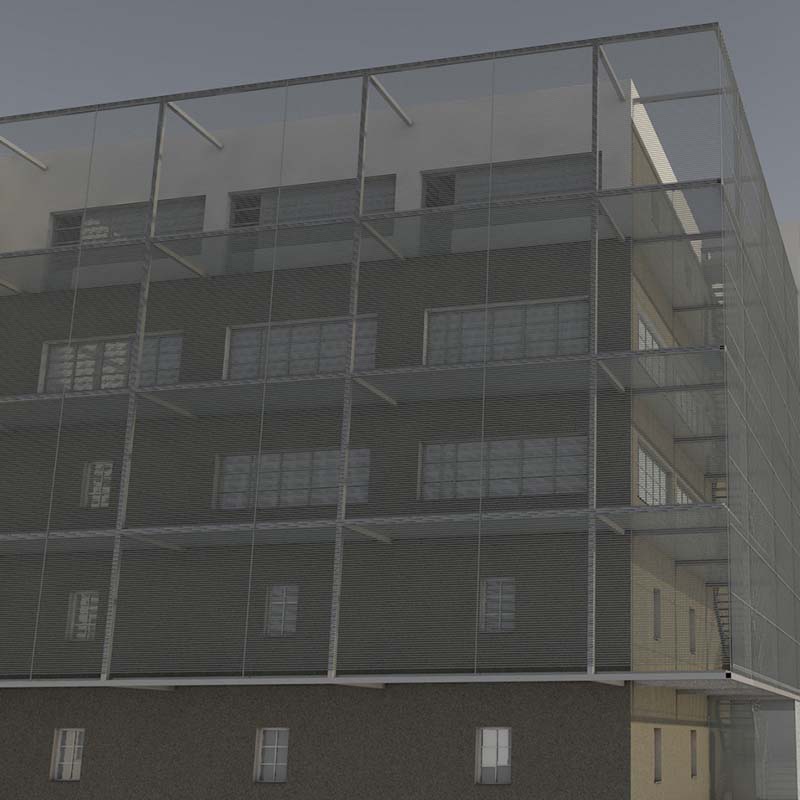

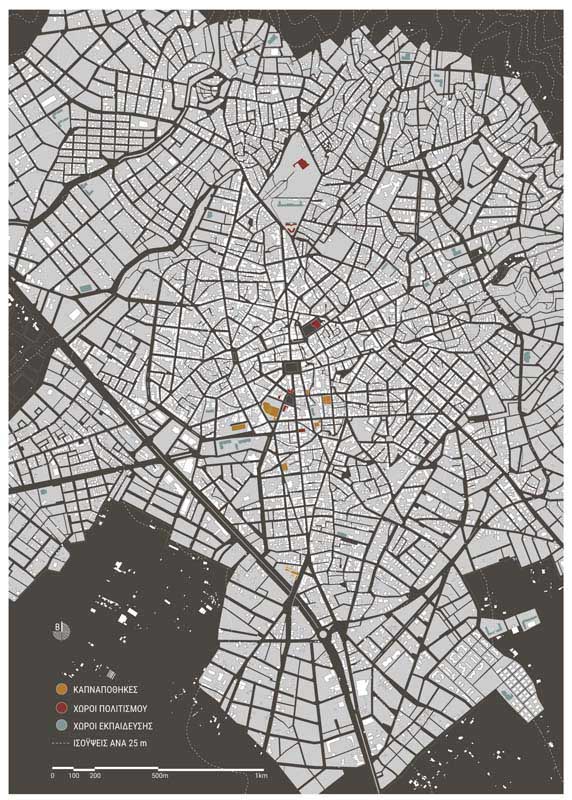

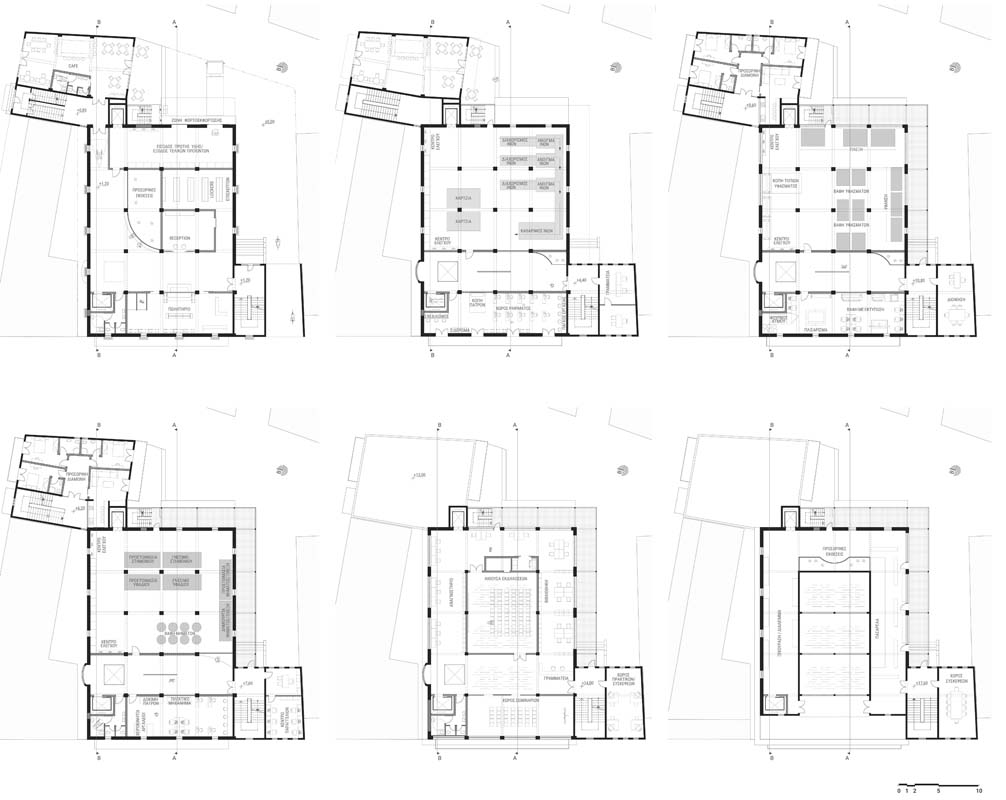







The thesis project is concerned with the reuse of the building previously housing the now obsolete National Tobacco Organisation located in the city of Agrinion. The proposal involves turning the building into a research facility for processing hemp fibre into yarn and textile. Thus it is questioned whether industrial buildings should only be turned into cultural centres as is the most common approach. Through the spectrum of transparency demanded for the garment industry today, in terms of both environmental and social aspects, the thesis tries to reimagine this industrial use in a smaller scale closer to artisanal practices, returning back to the city. The proposed new use is constantly referencing the city’s history tied with the tobacco cultivation and processing in a way of finding a bridge between past and future without erasing the former.
The need for theoretical research with a combination of fieldwork and the contribution of the information provided by social media and new online emerging resources was proven catalyzing for this specific project. At the same time approaching sustainability in a broader sense of how it can be applied not only spatially and in the design process, but also its existence in the core of the programs meant to be enclosed inside a space, has been important. For that reason choosing a more hybrid variety of tools has been a crucial part in search of a use that does not come about from the external single-glance of a narcissistic architectural mind. In that respect it was the whole research approach and working method that assisted into morphing the initial empirical quest into a design product, into space.
Supervisor: Mitroulias Giorgos
Reference Number: 760




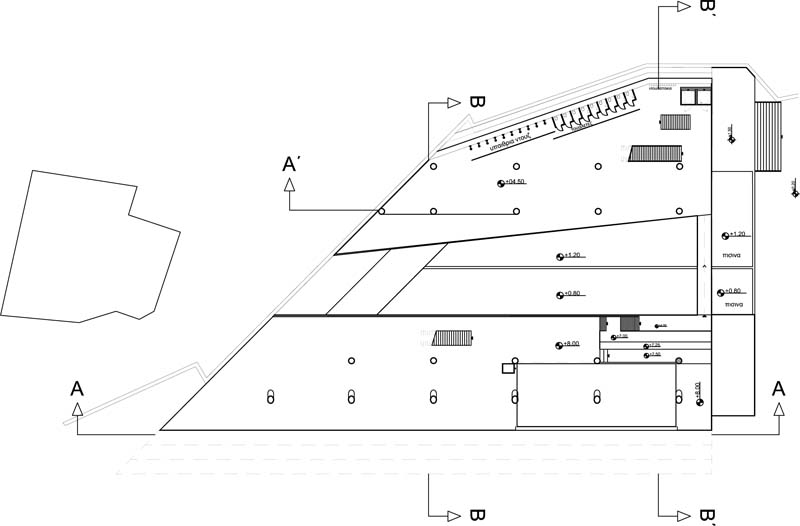





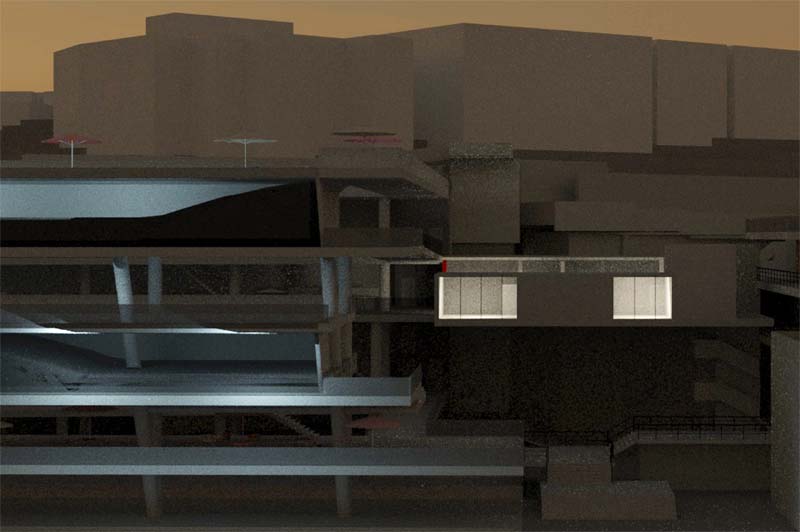

The hill of Kastela in Piraeus descends to the sea, in highly tourist and recreational locations, such as Mikrolimano and the Dilabelis coast. The coast of the hill of Kastela is clearly of a super-local character. But it is still undeveloped and neglected.
In Mikrolimano, in particular to the west of the unfinished building of the Zachariou Foundation, is the building plot that this project deals with.
Forming a seafront for the whole world in a concrete construction is its goal.
It is a multi-layered structure that includes situations commonly found on beaches. Seawater swimming pools, shops, cafes, leisure spaces and outdoor cinema. At the basement are located the engine rooms of the pools of this level. On the ground floor there are three seawater pools with their respective baths and toilets. On the front part of the construction there are five levels of recreation areas and swimming pools with unobstructed views of the sea of Faliro. In the rear part of the building, the access to the ground floor takes place with a multipurpose ramp. There are two levels with open-air baths and toilets and at the next level a swimming pool and shops with the necessary services for visitors as well as a cafe. The construction ends at the peripheral road of Kastela with a ramp of nessesary inclination. The vertical communication is ensured by lifts.
It is a "beach" that grows in height and can accommodate events that can be found on any sea coast, giving to the visitors freedom to shape them themselves.
It is an attempt to implement a public movement that connects Kastella with Mikrolimano and the Dilavaris coastline.
“Where we finish, the sea starts...” K. D.
Supervisor: Paniyiris Costis
Reference Number: 730


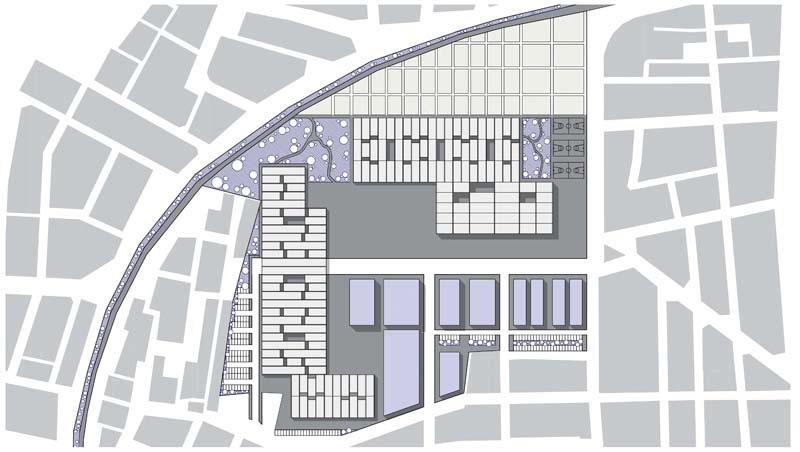

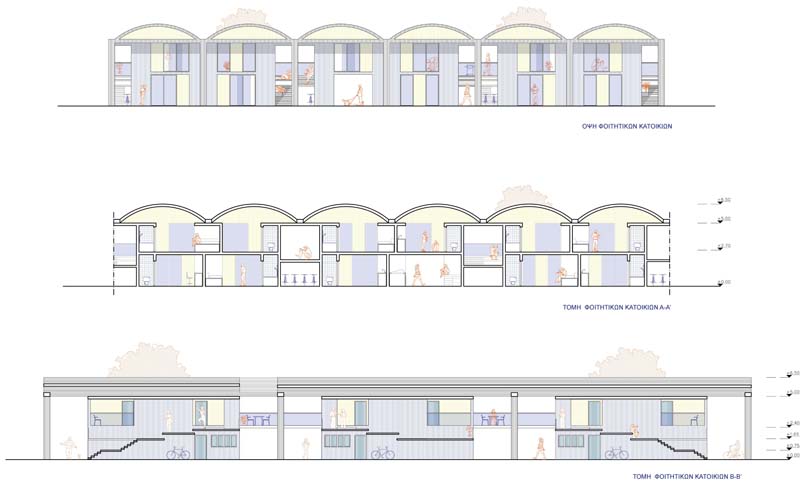

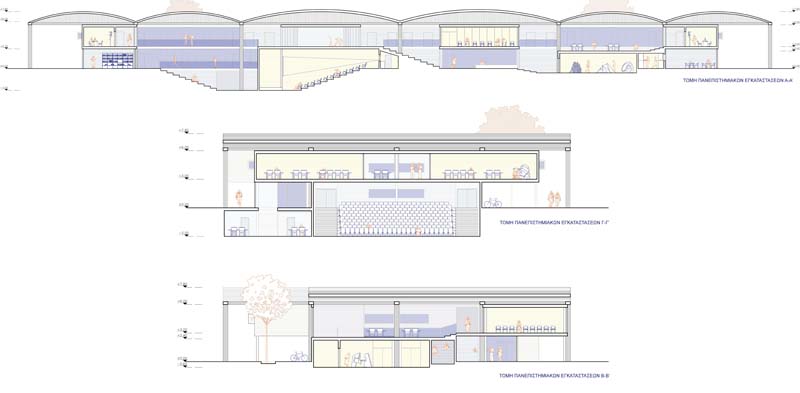

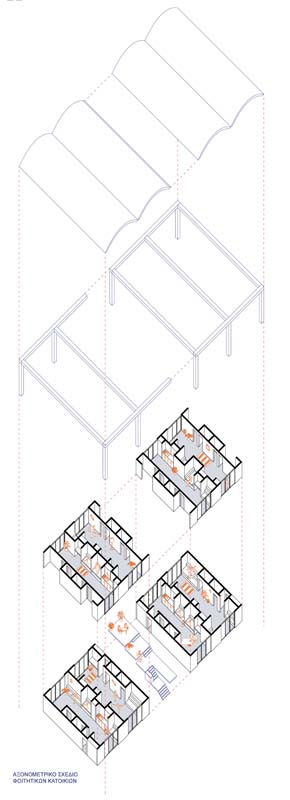

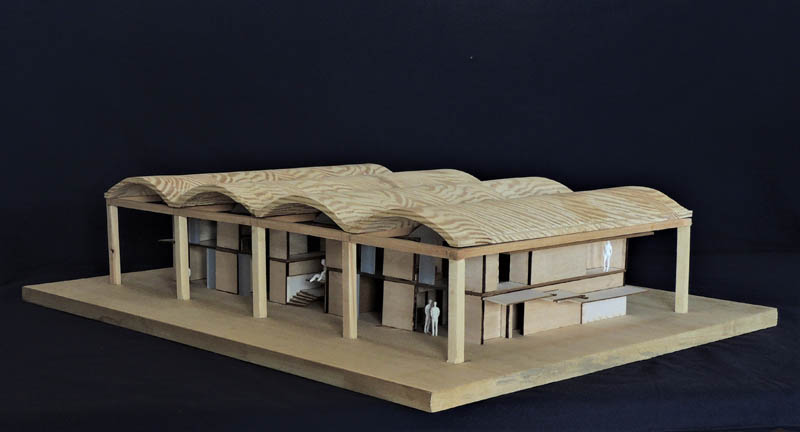

This thesis suggests the re-use of the industrial shells of the former cotton manufactore in Nea Ionia, Volos and their subsequent transformation to student residences and university facilities within the wider context of the regeneration and revivification of the former factory as a whole. Also, its connection with the surrounding urban area. This proposal would not be limited to the design of building structures, but through the utilisation of the existing building stock and the protection of the historical memory of the factory, would aim at designing a university campus which would communicate with the city, stimulate the local social fabric, upgrade local functions as well as quality of everyday life.
Supervisor: Mitroulias Giorgos
Reference Number: 754


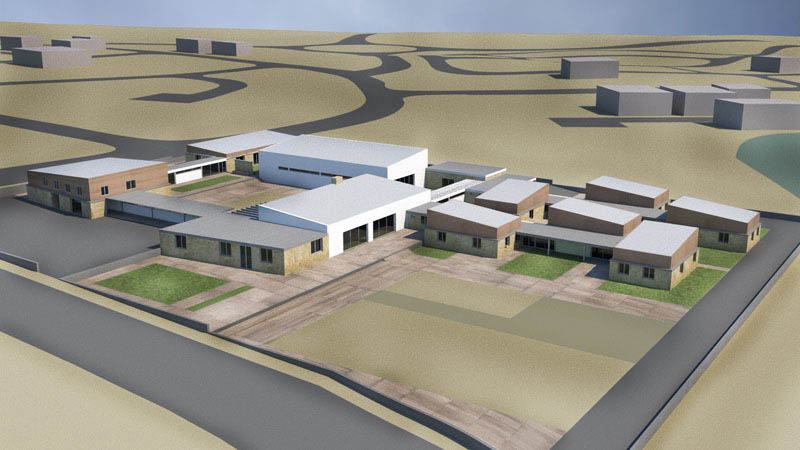

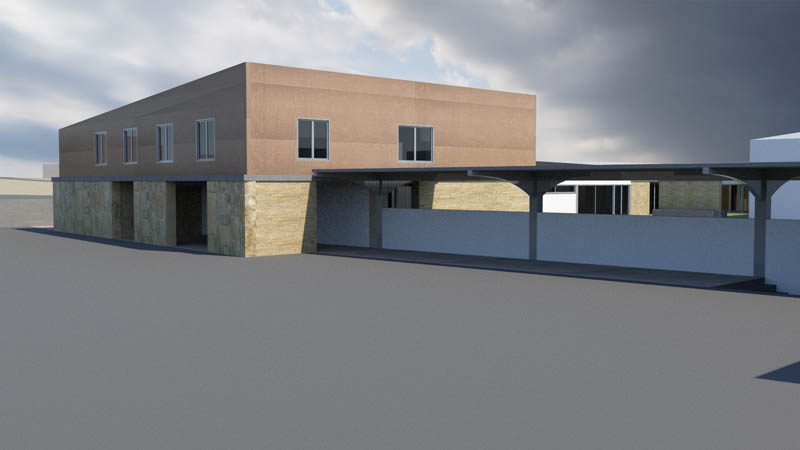

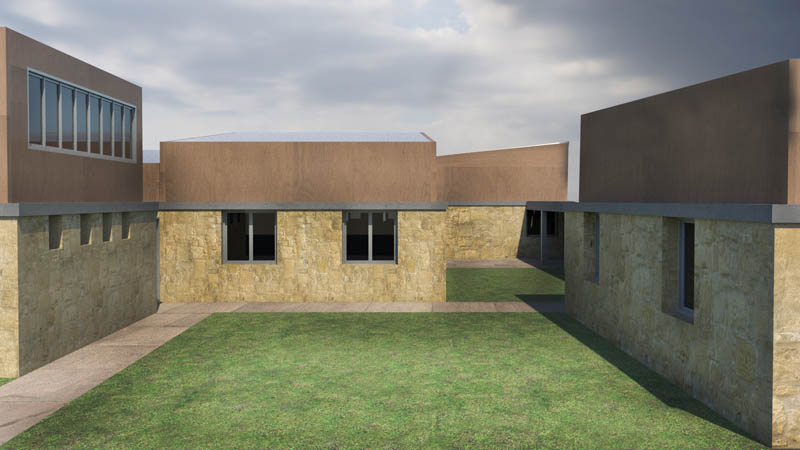

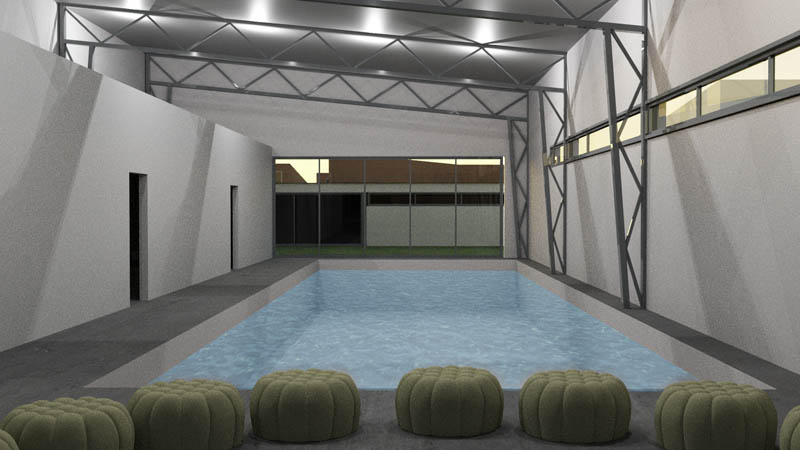

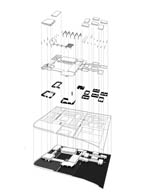

The creation of the new rehabilitation center for teenagers, in Cyprus in an already existing building, was the cause of choosing to design a new building that would fulfill the real functional needs of this institution.
The motivation for choosing such a theme was that we were aware of the operation of the rehab center of «Agia Skepi» at the suburbs of Nicosia and that it evoked us admiration the anthropocentric way of operation.
Our decision for designing such a building was concurrent with the search of a real place for the establishment of this new foundation, about which we were informed and it was going to start working at March 2019.
The building in order to fulfill all the needs of the program it includes properly configured spaces, for living, recreation and psychotherapies. More specifically a complex of semi-autonomous buildings that are connected with each other with corridors, are forming two main courtyards, giving a sensation of a neighborhood. All buildings are ground leveled except for the living units and the entrance unit so as to create more potential ways of moving between
In order to create the filling of familiarity, for the construction of the bulding units we used wood and stone at the external. However, because of the great spans that was created in the buildings, we used metal stracture as a static body.
The aim of this assignment was to fulfill all the real needs of the rehabilitation center using the best possible way.
Supervisor: Kanarelis Theoklis
Reference Number: 738


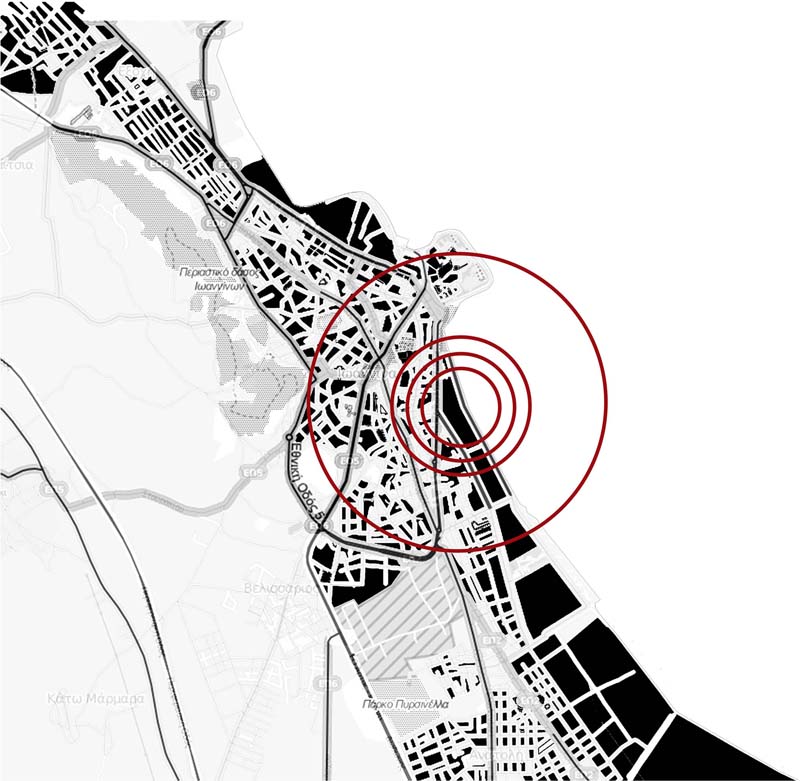

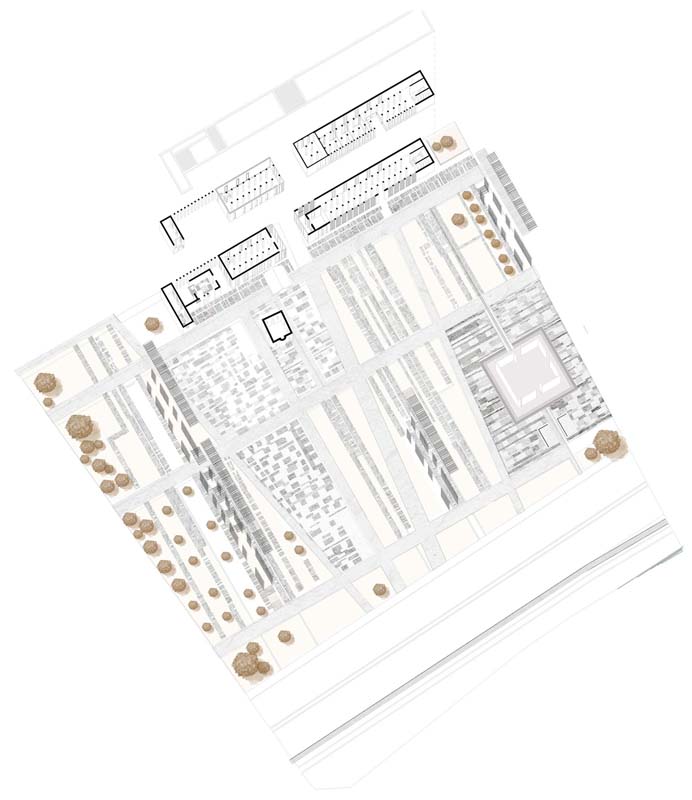

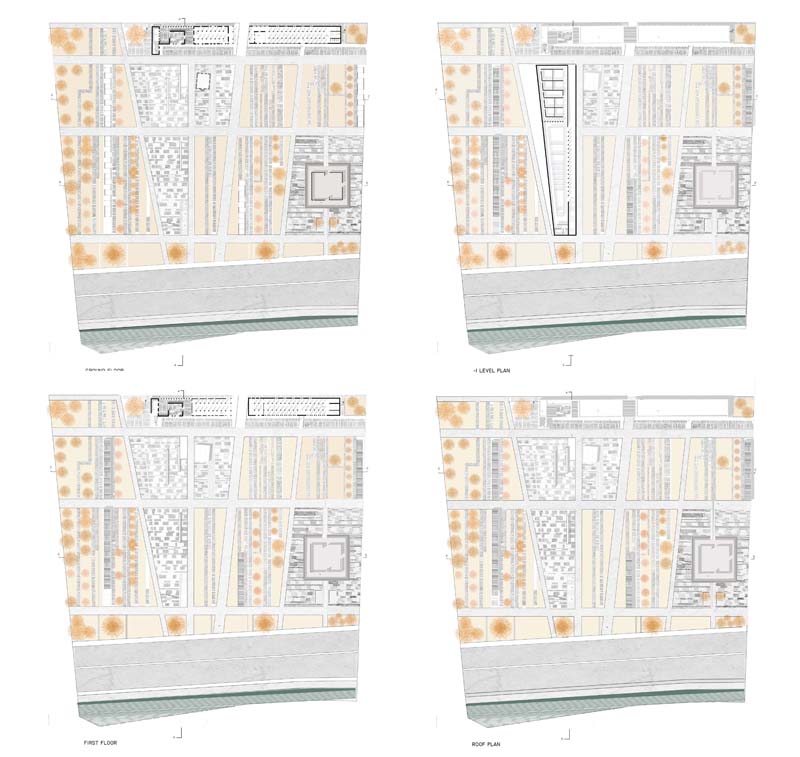

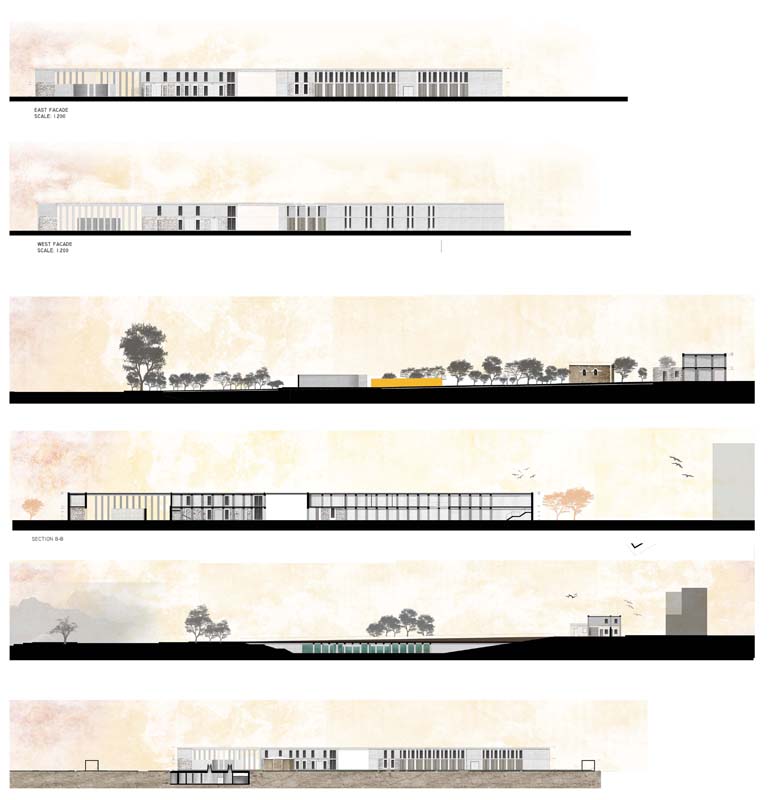

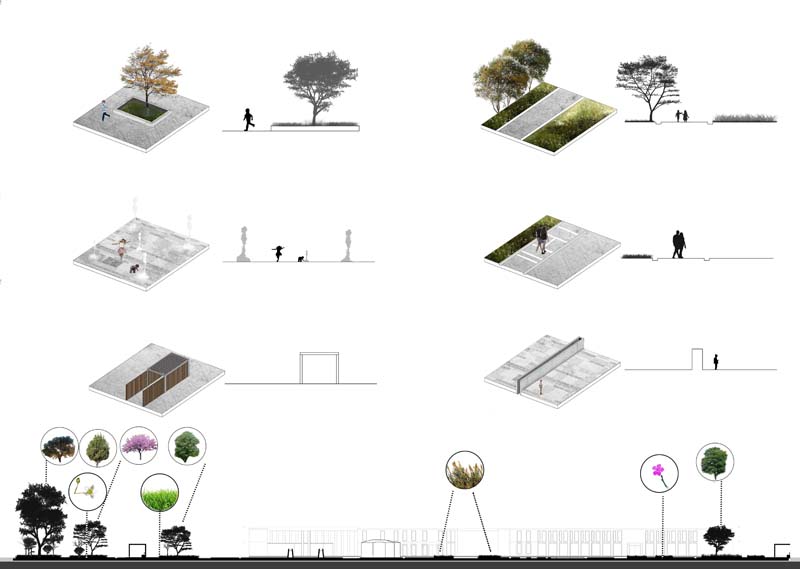

In the basin of Ioannina, in the abandoned former military prisons, the current proposal for the creation of a biological center aiming at the study and preservation of the life forms that Lake Pamvotis is hosting. The building program includes a laboratory cave space, a library office space, a showroom and a café. The ground floor of the complex consists of the existing preserved stone buildings, which are joined in a single unit with the addition of a concrete in the northern part where the library will be housed. In the eastern part, recreational spaces are articulated. The construction is aimed at a monolithic single effect, a strong and linear construction, low in height compared to existing buildings exceeding 12 meters. The first floor is constructed with the addition of concrete over existing ones. The floor plan is formed by the same column switching rule, emphasizing the linear potential of the whole. The layout of the courtyard where it draws elements from the traditional architecture of the area's paths. The landscape is characterized by paths of different sizes and materials that enable the visitor walker of a different experience on each type of route he will choose. At the same time, there are roof-mounted galleries that offer protection during a rainfall or in the summer months sun protection.
Supervisor: Kanarelis Theoklis
Reference Number: 734


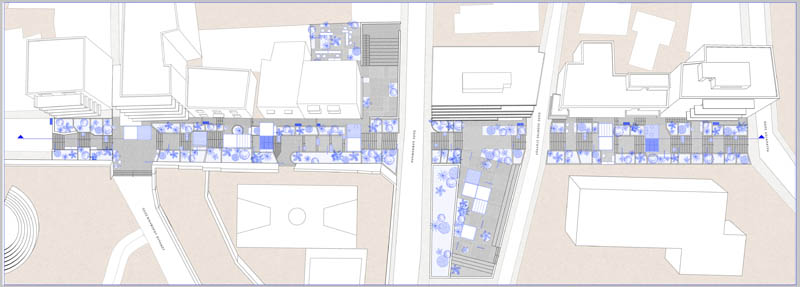

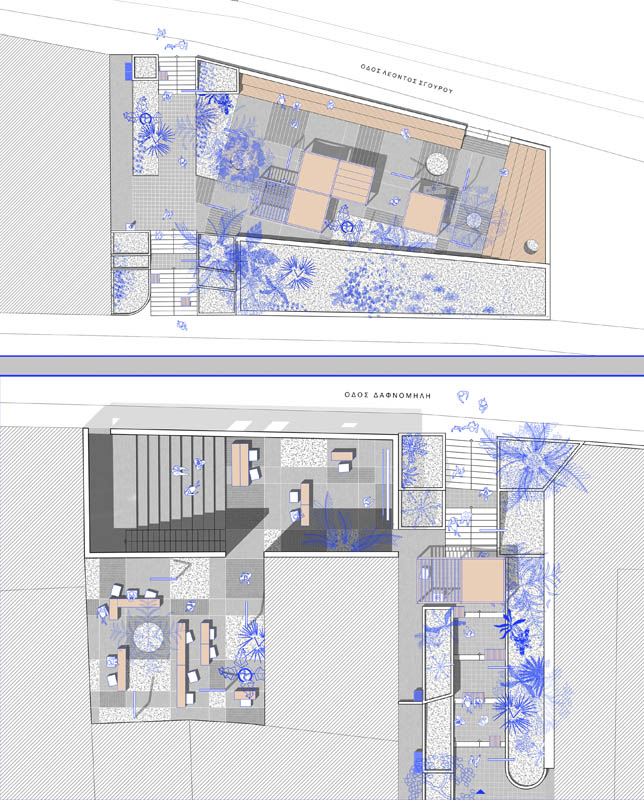

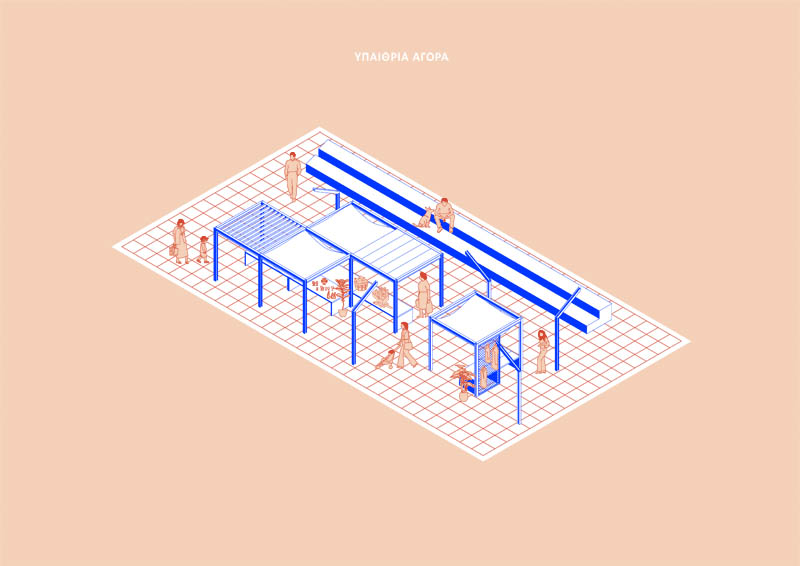

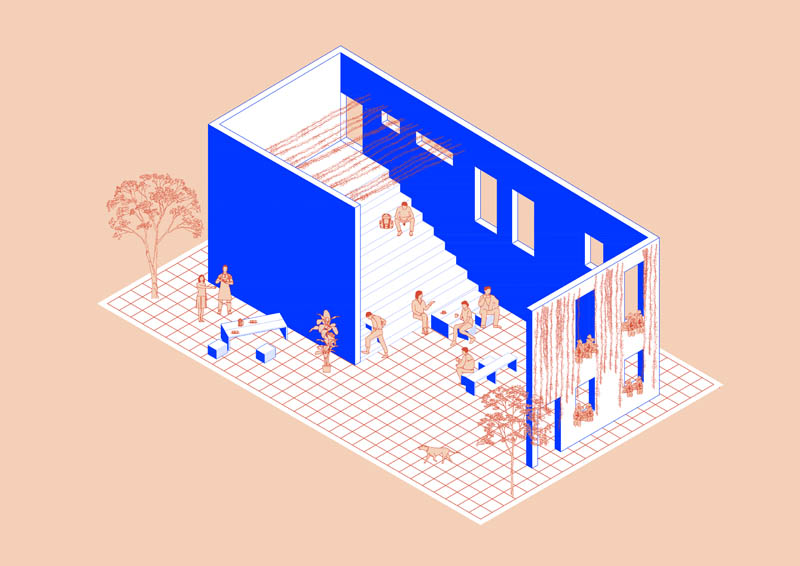

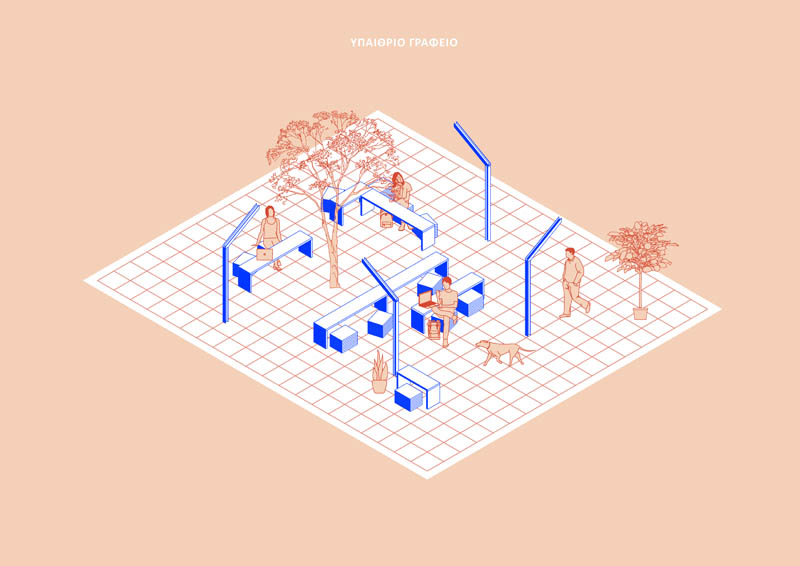

The initiation of this thesis was the diverse Athenian topology, consisting of inclined paths who take upon the typology of stairs. This inclined public space is being re-examined as an outdoor scene of conflict between public and private interests. The stairs are being deconstructed as a dipole of motion - stop, that defines them and are tested as a space generator, oriented around a collective self- management. The archetype of the garden is being put forward as a syntax for the redesign of the open air inclined spaces. Our goal is to reclaim public space through the development of an interventionist practice that suggests a small scale design. Terms such as neighborhood and domestication become prime concepts in our design. Finally, the performativity of the staircase is redefined, fully adapted to the collective and individual needs of the neighborhood.
Supervisor: Kotionis Zissis
Reference Number: 774


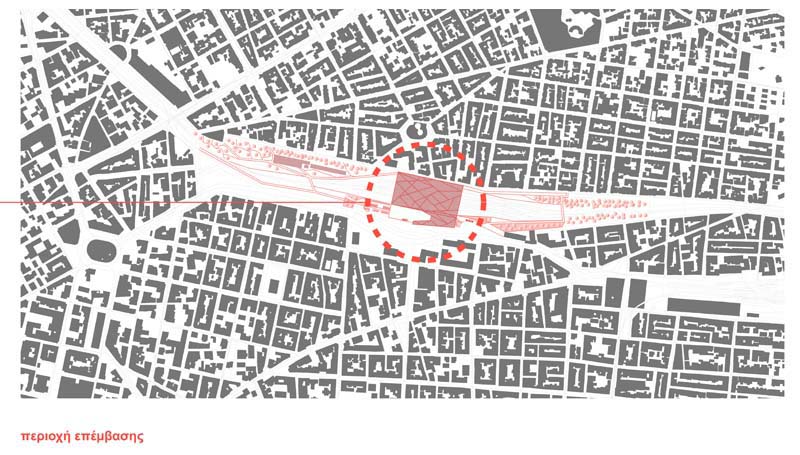

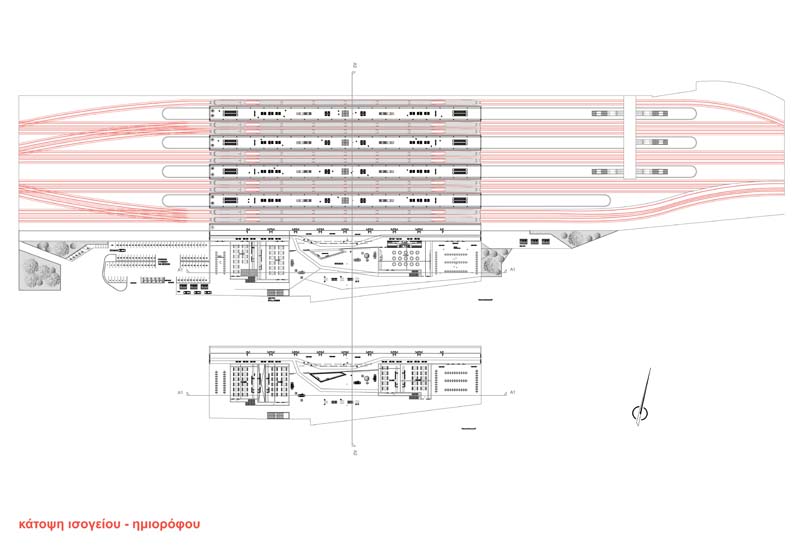

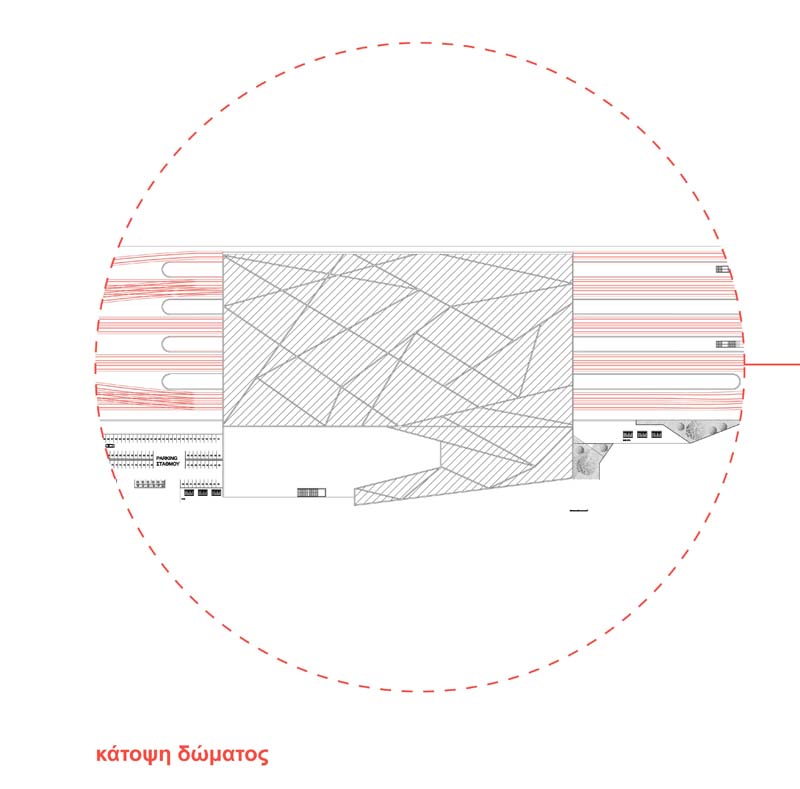

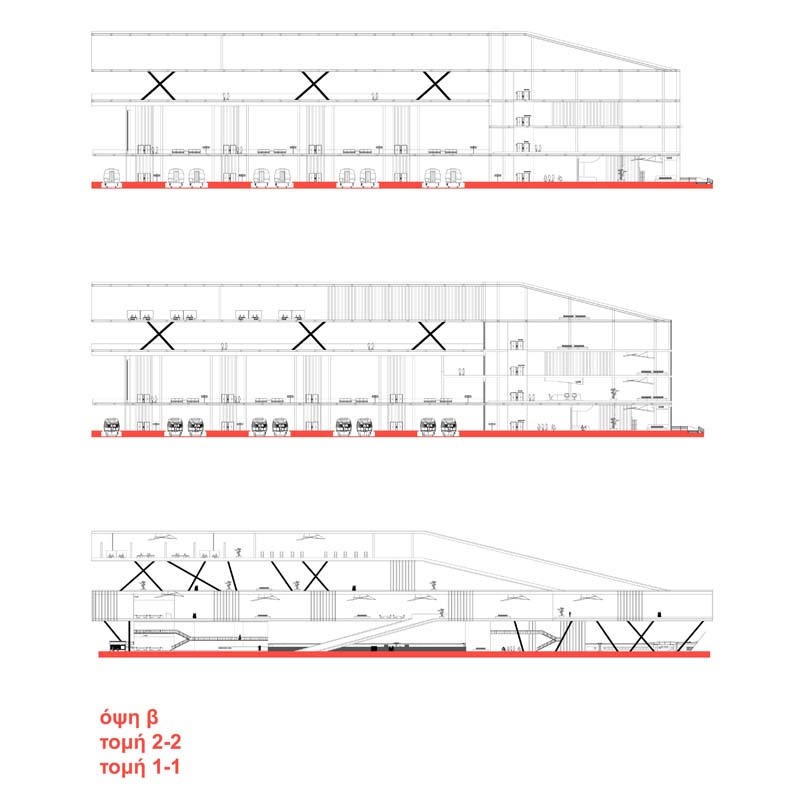



The main concern of this thesis is to build a new unit at the main train station in the area of Attica (Larisis Station). The main reason of choosing this subject is the need of the existence of a building that would be able to become the main entrance of the travelers that would visit the country. Moreover, trying to create a very big public building like this one in a very dense city, was certainly challenging.
The main function of the train station is concentrated not only on the transportation of the mass but also on a more poetic and romantic aspect of the human behavior. This place reflects meetings and separations, the start and the end of an experience, the starting point of the urban, and also a landmark for the city. Nowadays, it is a public belief that train stations are aligned to movies, novels and other artistic cre- ations and hold a very close relation to each and every one.
The main concern consists of (a) the satisfaction of many multiple functional needs with the best architectural plan. The location where the unit would be, was very hard to decide because the building would also need to host several public functions (b). The main purpose of the aforementioned is to build a train station that could be a part of the city. Furthermore, through planning, I try to revise the unprivileged area where the unit is going to be built. Consequently, the third concern rises; the need to create an urban plan (c), where the city itself influences and forms the main building and makes it part of the whole.
Supervisor: Vyzoviti Sophia
Reference Number: 752


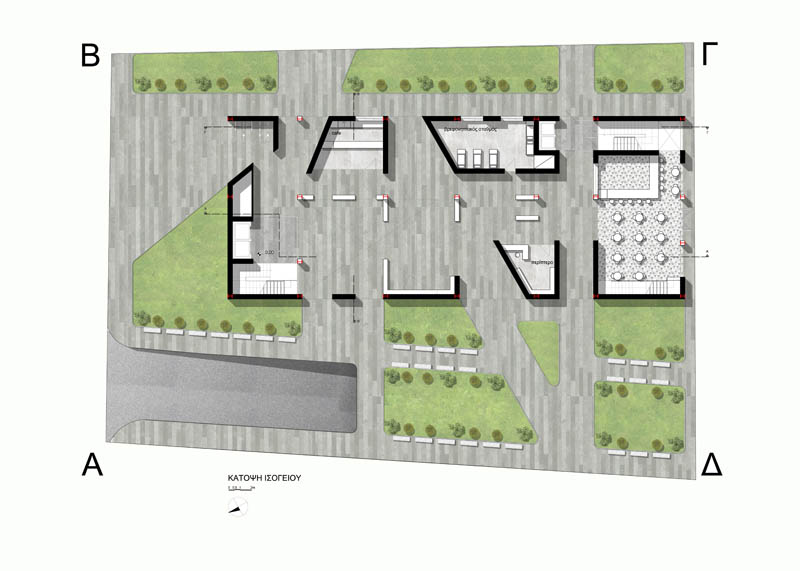

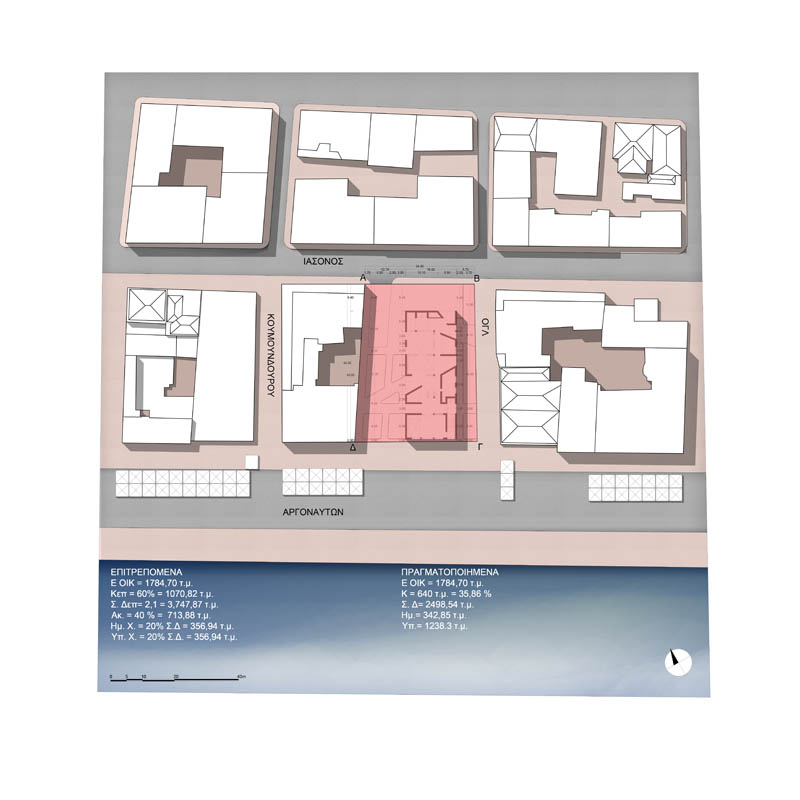



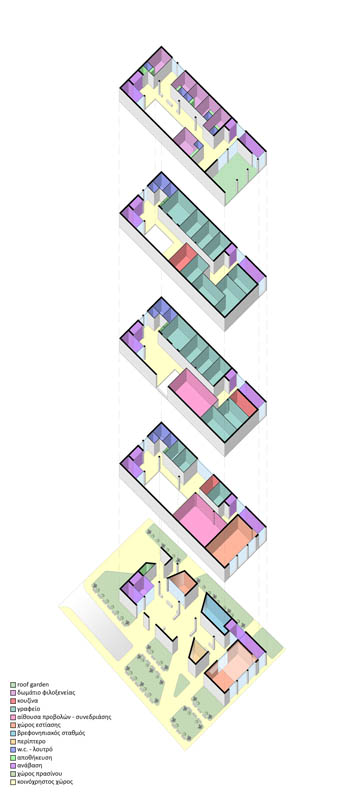



This diploma thesis deals with the synthetic solution of an office building as well as with the design and installation of a dynamic shading system, contributing to meeting the needs of its users, for natural lighting and better interacting with the external environment. Spatially, the building is situated on the coastal front of the city of Volos, a place where the opportunity is given for maximum exploitation of the view as well as the large percentage of annual sunshine that characterizes this area. Also, emphasis was placed on the surrounding area of the building, where a new square was designed, a large part of which was planted, thus bringing a picture of a natural landscape within the densely built image of the beach of Volos. The study also includes three underground parking levels, providing a solution to the problem of lack of parking space around that area. The ground floor of the building is directly linked to the square. The ground floor of the building is directly linked to the square, while the masonry at this level is designed to provide attractive to pedestrians, passages / entrances from the square to the building and vice versa. Above the ground floor level, the building evolves into 4 floors, the ascent of which increases the degree of privacy. Critical points of the study were the achievement of a functional building, the smooth integration of the building with the existing buildings in the area, the study of the dynamic system in order to respond in the best possible way to the environmental conditions of the particular region during the year providing adequate natural light. A common denominator at each stage of the study was the respect for the needs of the human potential and the satisfaction of them.
Supervisors: Adamakis Kostas, Tsangrassoulis Aris
Reference Number: 741

